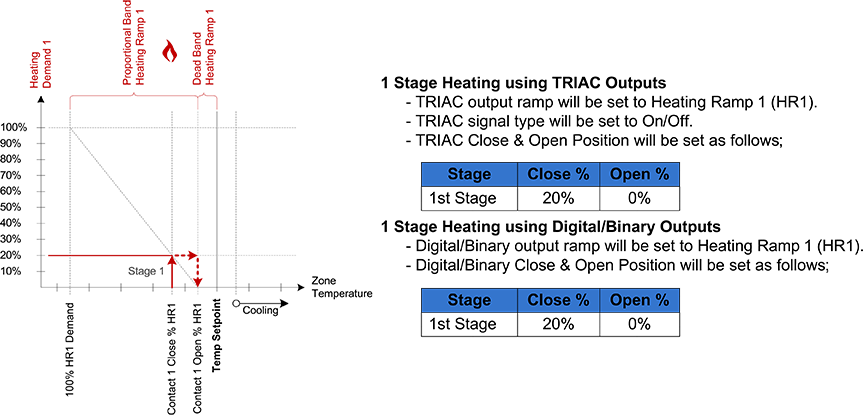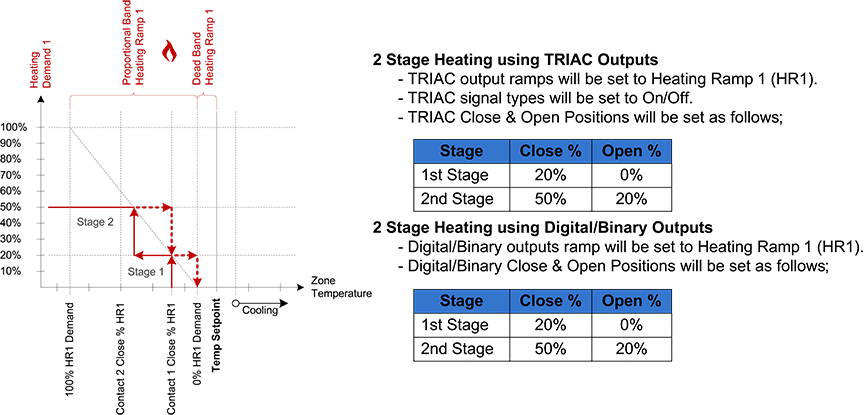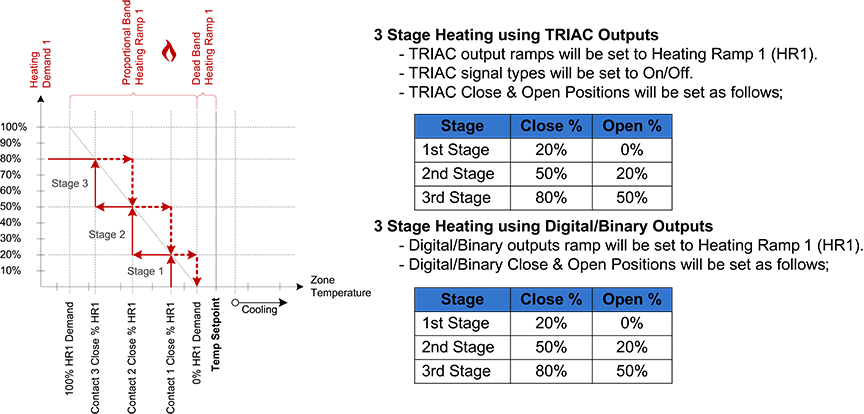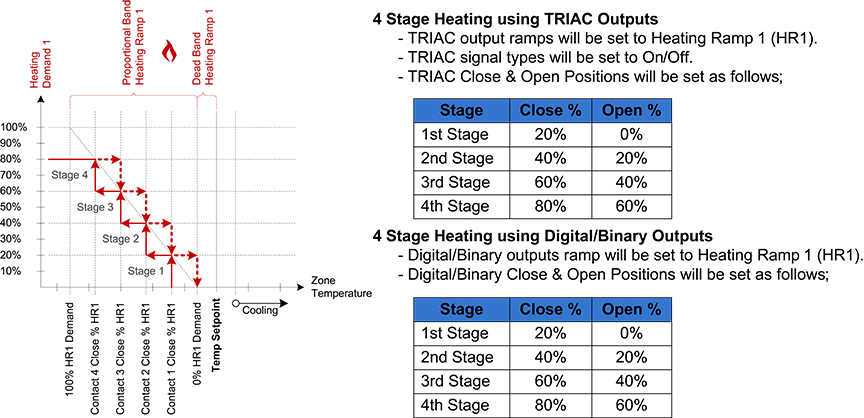Setting the Stages
Electric Heater Stage Configuration Using the TUCB Series Controller
There are many ways to control an electric duct heater: modulating (0-10Vdc), pulse (24Vac or dry contact), On/Off (24Vac) or stages.
In this document we will consider on/off or staged control.
Stages are a series of On/Off outputs (inputs to the heater) that increase the heater capacity with each step activated.
On/Off or staged heating can be achieved with TRIAC or Digital (Binary) outputs. Each stage requires its own output meaning that you require 4 TRIACs or
Digital outputs to control a 4-stage heater. In addition to the physical output requirements, they must be configured to allow the controller to take action:
- Ramp
- Signal Type
- Activation Percentage
- Deactivation Percentage
The Ramp identifies the purpose of the output. Most of our controllers offer two distinct ramps (Heating Ramp 1 and Heating Ramp 2).
When configuring stages, it is important to remain on the same ramp for all the outputs since each ramp has its own proportional and dead band.
This means that if the first stage is configured on Heating Ramp 1, all the other stages should be configured on Heating Ramp 1. Note that Heating Ramp 2 is
mostly used as reheat for dehumidification sequences.
The Signal Type defines the signal required to operate the electric heater. This configuration is only available when using TRIACs.
When configuring digital (binary) outputs, the signal is automatically On/Off.
The Activation Percentage or referred to as "Close Position" in Neptronic controllers, defines the demand level at which the stage is activated.
The Close Position must be seen from a contact point of view. There are many possible configurations, which will be demonstrated later. Note that the lowest
configurable Close Position value is restricted to 15%.
The Deactivation Percentage or referred to as "Open Position" in Neptronic controllers, defines the demand level at which the stage is
deactivated.
As mentioned previously, stages can be configured differently and is a matter of preference. Below are examples of values that can be used to set-up stages.
Note that Heating Ramp 1 was used in these examples but Heating Ramp 2 can be used as well.




The same principle can be applied to cooling by replacing the output ramps to Cooling Ramp 1 or 2. Just remember to keep the stages on the same ramp.